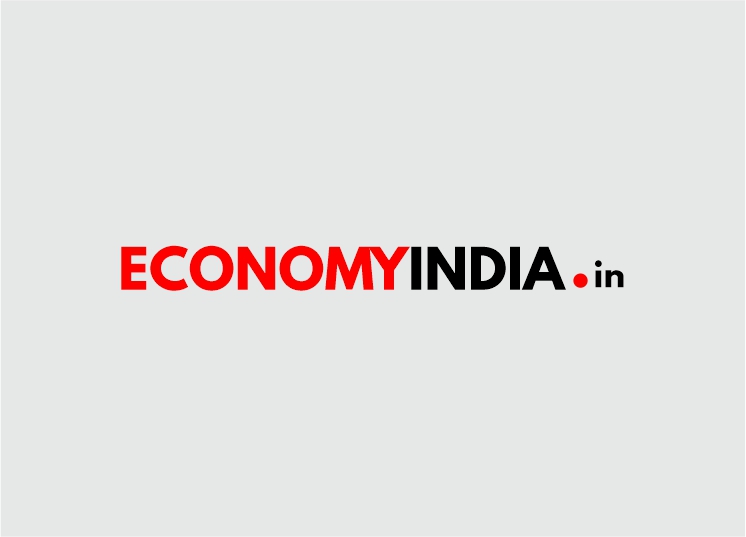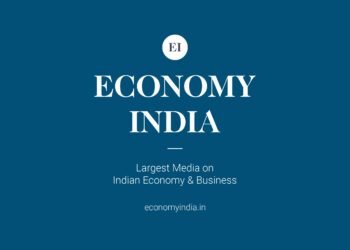In FY 2020-21, the Indian economy witnessed a V-shaped recovery after experiencing a technical recession for two consecutive quarters. The year was a testament to India’s underlying strengths and fault lines.
The course of the COVID-19 spread was the primary determinant of economic movement in the country, as it was around the world.
As the pandemic reached India, the Union Government rightly prioritised life and health above everything else, and initiated consecutive lockdowns of varying degrees to restrict public movement and manage the health infrastructure.
With 65% of the economy locked down, India stood witness to a historical gross domestic product (GDP) de-growth of 24.4% in Q1 FY21 (Source: Provisional National Income estimates by the National Statistical Office). However, as the lockdowns eased, the GDP movement was moderated in the subsequent quarter before entering positive growth territory in Q3 FY21. At a y-o-y level, the NSO estimates that the GDP contracted by 7.3% in FY 2020-21, and gross value added (GVA) fell by 6.2%.
Going forward, the IMF expects India to register a growth of 9.5% and 8.5% in FY 2021-22 and FY 2022-23, respectively, on the back of a lower base, ability to mitigate risks from newer COVID-19 waves, and offtake of government programmes spurring investments and activity. India’s faster-than-expected recovery was driven by concerted efforts in the form of fiscal, monetary and budgetary interventions by the Government of India. These will further augment India’s growth trajectory.
A brief discussion on these factors follows.
AatmaNirbhar Bharat Abhiyan
The Government of India announced an economic package of Rs. 20.87 lakh crore (~10% of the GDP) with the vision of making India self reliant. It served as a much-needed economic impetus intended to help the country tide over the COVID-19 crisis. The package rests on five key pillars:
Economy – That leads to a quantum jump rather than incremental change.
Infrastructure – That becomes the identity of modern India.
System – That is technology-led and not based on past policy.
Demography – India’s strength is its demography, which is the source of the energy for a self-reliant India.
Demand – The demand and supply chain in the economy is the strength that must be harnessed to its rightful potential.
Key highlights for various sectors/beneficiary groups under the package include:
For MSMEs
- Emergency Credit Line Guarantee Scheme (ECLGS) to businesses or MSMEs from Banks and Non-Banking Financial Companies (NBFCs)
- Rs. 50,000 crore equity infusion for viable MSMEs through ‘Fund of Funds’
- Rs. 20,000 crore subordinate debt scheme for stressed MSMEs for Agriculture, Fisheries and Food Processing Sectors
- Rs. 1 lakh crore Agri Infrastructure Fund to farmers for farm-gate infrastructure
- Rs. 10,000 crore scheme for formalisation of Micro-Food Enterprises (MFE)
- Rs. 20,000 crore for fishermen through Pradhan Mantri Matsya Sampada Yojana (PMMSY)
Animal Husbandry Infrastructure Development Fund setup for Rs. 15,000 crore to support private investment in dairy processing, cattle feed infrastructure and value addition
- Promotion of herbal cultivation with an outlay of Rs. 4,000 crore For Employment and Ease of Doing Business
- Additional allotment of Rs. 40,000 crore for MGNREGS for boosting employment
- Decriminalisation of the Companies Act, 2013 for ease of doing business
- Permission for direct listing of securities by Indian public companies in foreign jurisdictions
- Lowering of penalties for all defaults for one-person companies, small companies, producer companies and start-ups For Economically Weaker Sections, Farmers and Migrant Workers
- Introduction of ‘One Nation One Card’ with which the migrant workers can access the Public Distribution System from any fair price shop anywhere in India
- Living facilities for migrant labours and the urban poor at affordable rent under the PMAY (Pradhan Mantri Awas Yojana)
- PM Svanidhi scheme launched to facilitate easy access to credit for urban street vendors
- Extended Rs. 30,000 crore additional re-finance support via NABARD, for meeting crop loan requirements of Regional Rural Banks and Rural Cooperative Banks
- A special drive to give concessional credit to PM-KISAN beneficiaries through Kisan Credit Cards. Animal husbandry farmers and fishermen also included in the drive.
- The initial set announcements of the AatmaNirbhar Bharat Abhiyan in May 2020 has been followed up with a second and third set of inclusions in October and November 2020, respectively.
These include the following initiatives:
- Additional capital expenditure of Rs. 25,000 crore to the Ministry of Road Transport and the Ministry of Defence
- 11 states sanctioned Rs. 3,621 crore towards capital expenditure as an interest-free loan
- Launch of AatmaNirbhar Bharat Rozgar Yojana for the creation of new employment opportunities
- Launch of ECLGS 2.0 for supporting stressed sectors with a tenure of 5 years, including a moratorium of 1 year
- Rs. 1.46 lakh crore for AatmaNirbhar Manufacturing Production Linked Incentives (PLI) for 10 champion sectors
- An additional outlay of Rs. 18,000 crore provided for the PMAY-Urban
- Rs. 6,000 crore equity infusion in National Infrastructure Investment Fund debt platform and Rs 1.10 lakh crore platform for infra-debt financing
- Rs. 65,000 crore for subsidised fertilisers for helping 140 million framers.
- An additional outlay of Rs. 10,000 crore provided for Pradhan Mantri Garib Kalyan Rozgar Yojana
RBI Measures
After taking stock of the macroeconomic scenario during Q1 FY21, the Reserve Bank of India (RBI) assumed an accommodative stance in an off-policy cycle, cutting the repo rate to 4% and the reverse repo rate to 3.35%. In the subsequent meetings (till June 2021), the Monetary Policy Committee (MPC) headed by the RBI Governor decided to maintain status quo and sustain the accommodative policy rates as long as necessary to mitigate the COVID-19 impact on the economy.
The Marginal Standing Facility (MSF) rate and bank rate also remained unchanged at 4.25%. These measures have helped ease the liquidity scenario in India, and complemented the fiscal measures rolled out by the Union and state governments.
Another shot in the arm for the Economy
In addition to the large-scale stimulus in FY 2020-21, the Government of India has announced another relief package worth Rs. 6.28 lakh crore to support the economy.
Key components of this package include:
- Rs.1.1 lakh crore loan guarantee scheme for COVID-affected sectors
- Additional Rs. 1.5 lakh crore for Emergency Credit Line Guarantee Scheme
- Credit Guarantee Scheme to facilitate loans to 25 lakh persons through Micro Finance Institutions (MFIs)
- Financial support to more than 11,000 Registered Tourists/ Guides/ Travel and Tourism Stakeholders
- Extension of Aatma Nirbhar Bharat Rozgar Yojana till March 31, 2022
- Additional subsidy of Rs. 14,775 crore for DAP & P&K fertilisers
- Rs. 23,220 crore more for public health with emphasis on children and paediatric care/paediatric beds Rs. 33,000 crore boost for project exports through National Export Insurance Account (NEIA)
- Rs.19,041 crore For Broadband to each Village through BharatNet PPP Model
- Extension of Tenure of PLI Scheme for Large Scale Electronics Manufacturing till FY 2025-26
- Rs. 3.03 lakh crore for Reform-Based Result-Linked Power Distribution Scheme
(Economy India)



